Never Growing Up: GABRIEL MOSES and SAMUEL ROSS’ ACW_NIKE TN98
|Shane Anderson
Bodies are floating in heaven, jumping, wrestling, stretching. In the foreground are a pair of feet, knees fully bent, with a blue pair of kicks on them. In this Renaissance-reminiscent image by artist Gabriel Moses, we can see the new ACW_NIKE TN98 sneakers by Samuel Ross, founder of A-COLD-WALL* and SRA. With the shoe, Nike and A-COLD-WALL* enter their seventh year of partnership and redefine the original 1998 Nike TN through an architectural lens that takes cues from brutalist design philosophy.
Moses and Ross have collaborated many times before, but, as will become clear, doing such for Nike means just a little more. In this conversation, they discuss their shared pasts, the importance of progressive companies and Black business, and the expansive research behind the new ACW_NIKE TN98.
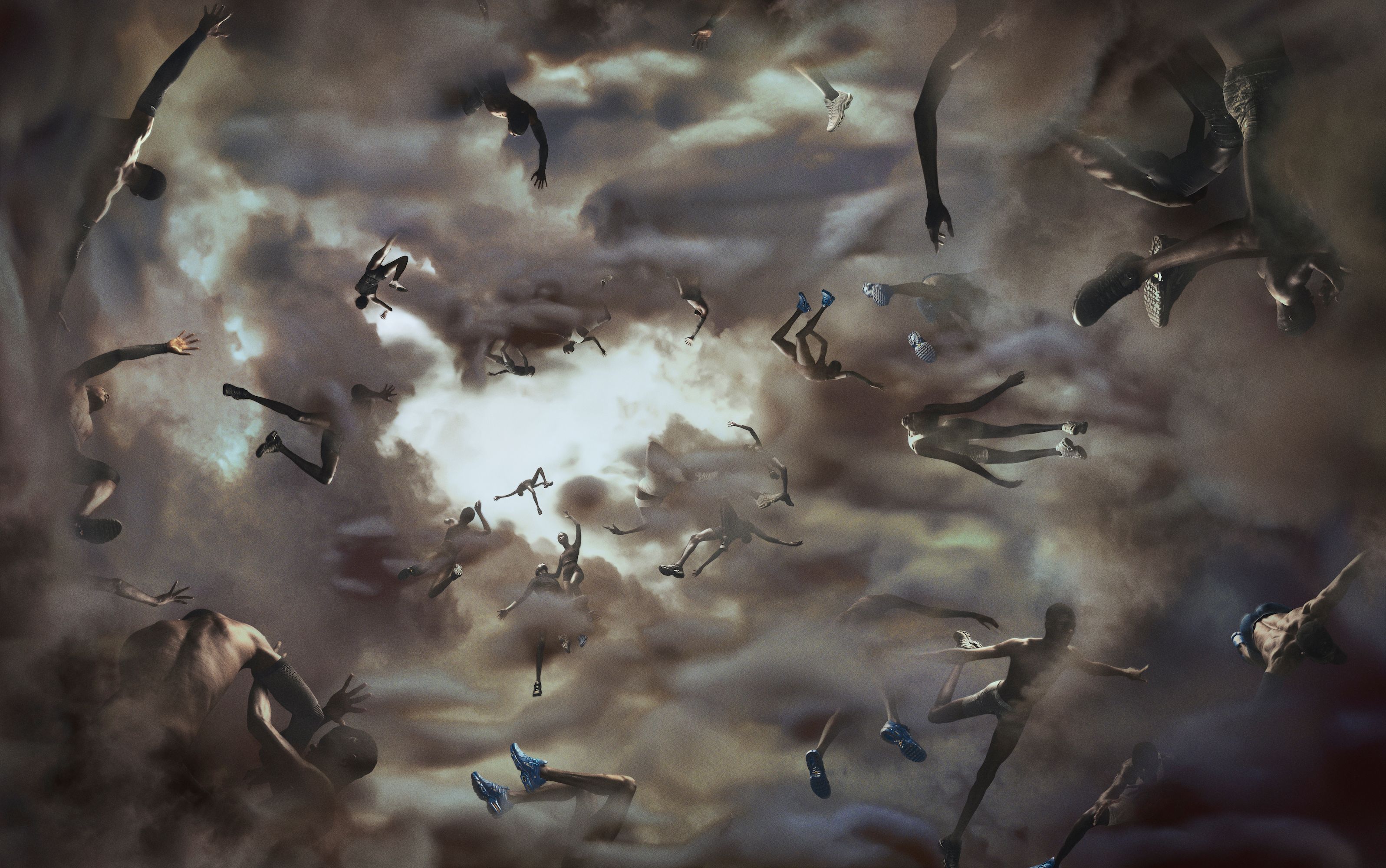
ON NEVER GROWING UP, WITH NIKE
SHANE ANDERSON: You have divergent first working experiences with Nike. Samuel, you sold bootlegged Nikes at 16, and Gabriel, you directed your first video for Nike at 18.
GABRIEL MOSES: Growing up, I used to style up my school uniform with Air Max. I remember constantly getting in trouble for them. So, I’d always bring a pair of Air Forces or TNs in my PE bag and wear them until being told to take them off. It was a statement when we didn’t have much. It meant something that we could put enough money together to get a pair of Nikes. And then, after picking up a new discipline at 18, it was almost like a dream come true for a brand you never saw yourself working with reaching out to you. I was making films with athletes at the time, and I had a friend who played at Chelsea. He was also a Nike athlete. It went on from there.
SAMUEL ROSS: As Gabriel was speaking, I was thinking about how there’s this interesting inflection point that we came from. We’re from the same part of London and come from very similar socio-economic backgrounds that force one into premature maturity. You go from child to adult relatively quickly. And I think that’s relevant to why we were both able to start our professional relationships with Nike at a young age.
As for me, we couldn’t afford anything growing up. I come from a highly educated home, but we didn’t have money because my parents don’t really care about material possessions. But I care about objects, aesthetics, and design. And there was always a pull towards Nike and sportswear because it meant belonging.
There are a lot of parallels between us because the canon of artistic Black Britain is a shared experience between the few individuals in that space.
GM: It’s good that there’s a group of us pushing forward into different territories. The ambition is to leave the door open, so there will be more of us. The job’s not done. Anyway, I’ve been blessed to work with so many different clients, brands, and fashion houses, but Nike still resonates the most and still feels like that first flex. I always feel proud of collaborating with the brand because I know what that means to the young me. It’s about never losing your childhood. I try to never lose that sense of imagination in my discipline.
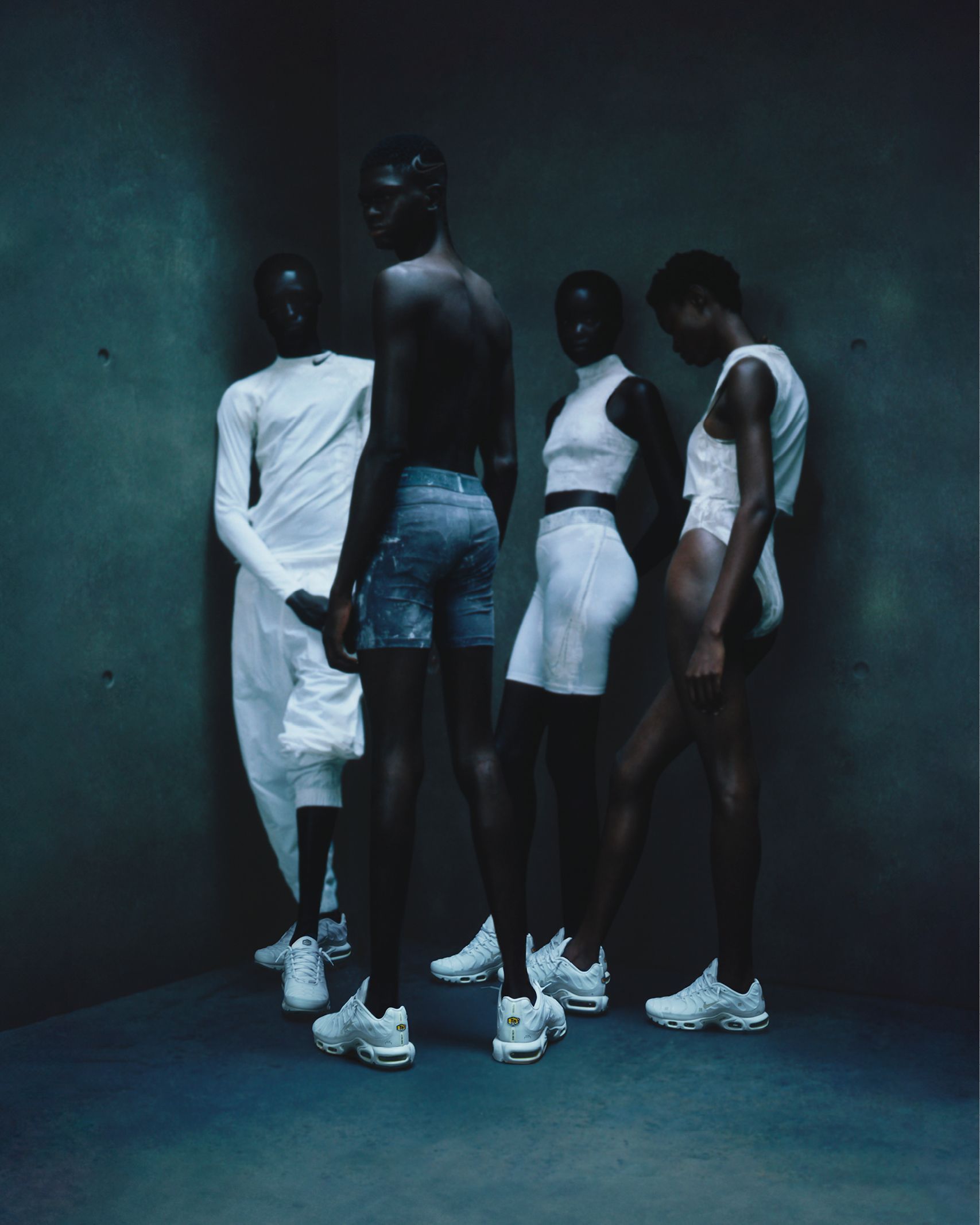
SR: I moved back to the borderline, or what we call over here “Ends.” It’s in the middle of the countryside in a town called Northampton. I moved back because I wanted to be closer to the environment that shaped what became A-COLD-WALL*, which was my first chapter. I didn’t want to become disassociated from reality and the societal issues I was exposed to during my childhood once money and success started coming. I didn’t want to end up in a W1 postcode sectioned off from the rest of society. So, I spend half of my week there and then the other half at my place in London. I think about my childhood a lot. I googled some of my friends and the people I spent a lot of time with during my formative years as a teenager. Most of them are in jail. And so, I think it’s important to stay sober and close to reality. To not let an opportunity, skill, or moment in time take us away from who we are representing and the stories we are telling.
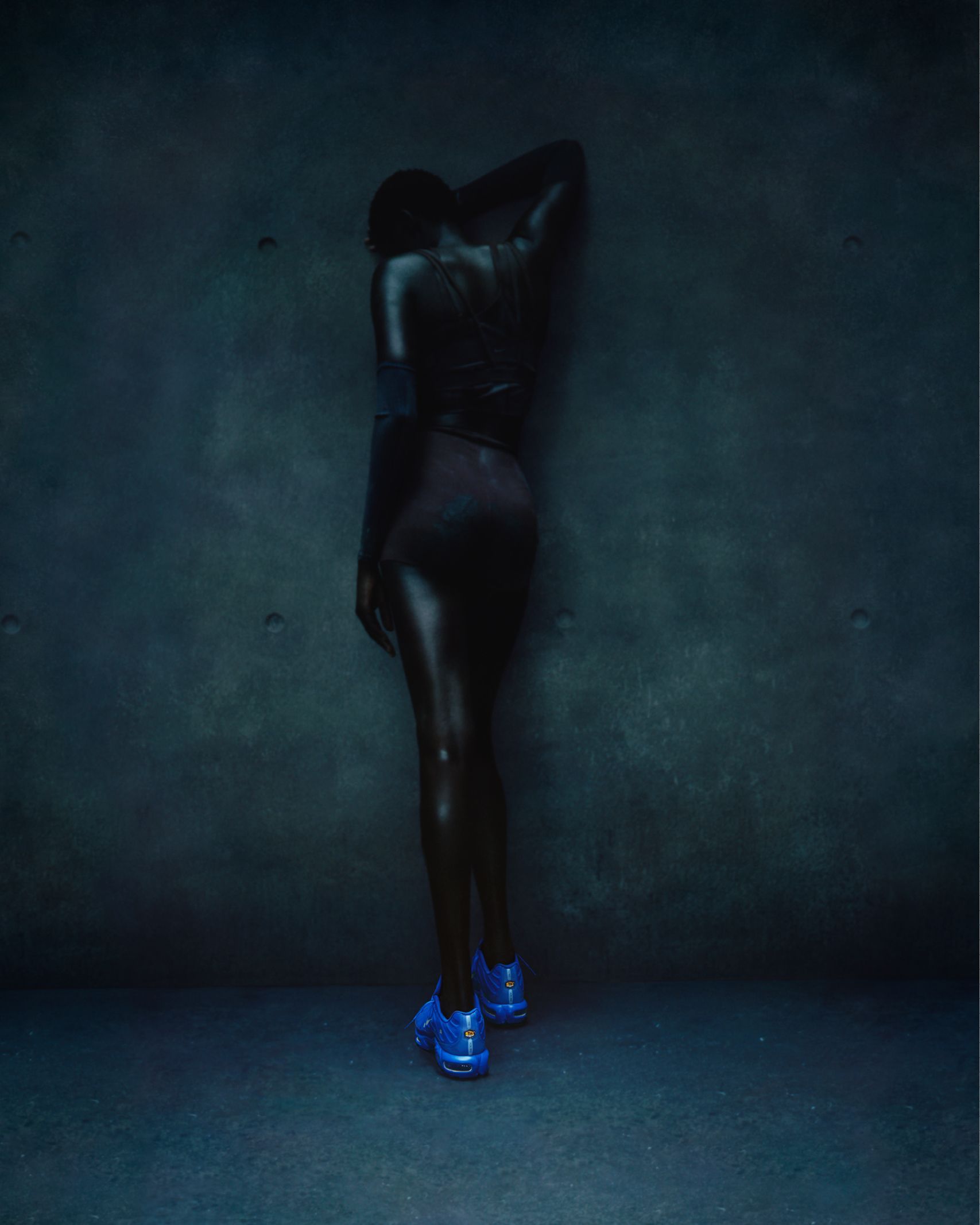
ON THE RESEARCH BEHIND THE ACW_NIKE TN98
SA: So, there was never the desire to leave your humble beginnings but to represent them?
SR: When the break came with A-COLD-WALL*, we moved to a nicer area in London, and I honestly felt like it was killing the essence of who I am. I think Gabriel can relate to this too. We don’t necessarily strive for a soft, gelatinous life. We’re practicing artists, almost like poets. We’re here to communicate what’s happening in time through a particular lens. I need to be close to the reality that people live and experience.
GM: I can relate to that. We’re at different stages of our lives, I’m 25, but I still surround myself with my friends from childhood. I keep myself in the same mindset as that 18-year-old. It’s very important to never lose that. To keep that love and remember where you started.
I had my first solo exhibition in April and my show opened the day after Samuel’s. It’s interesting because the community that came to support us at our openings speaks volumes about the scene and that spirit of uplifting.
SR: We should also state that Gabriel’s show had one of the highest visitation rates of the year at 180 Strand. And the scale of the exhibition was substantial. We’re talking about 80 meters of 60 still images and three films. If you’re lucky, you get one or two creative savants per generation who bleed excellence in their work and Gabriel embodies that.
But I think it’s important to talk about the relationship to creativity within the UK and US demographic that we’re from. There was a weird lapse where there wasn’t a canon of Millennial and Gen Z artists from our background who were on the world stage. Think about the YBAs [Young British Artists]. That was in the mid-1990s. Today there’s not a lot of us representing rawness on the world stage who come from the UK.
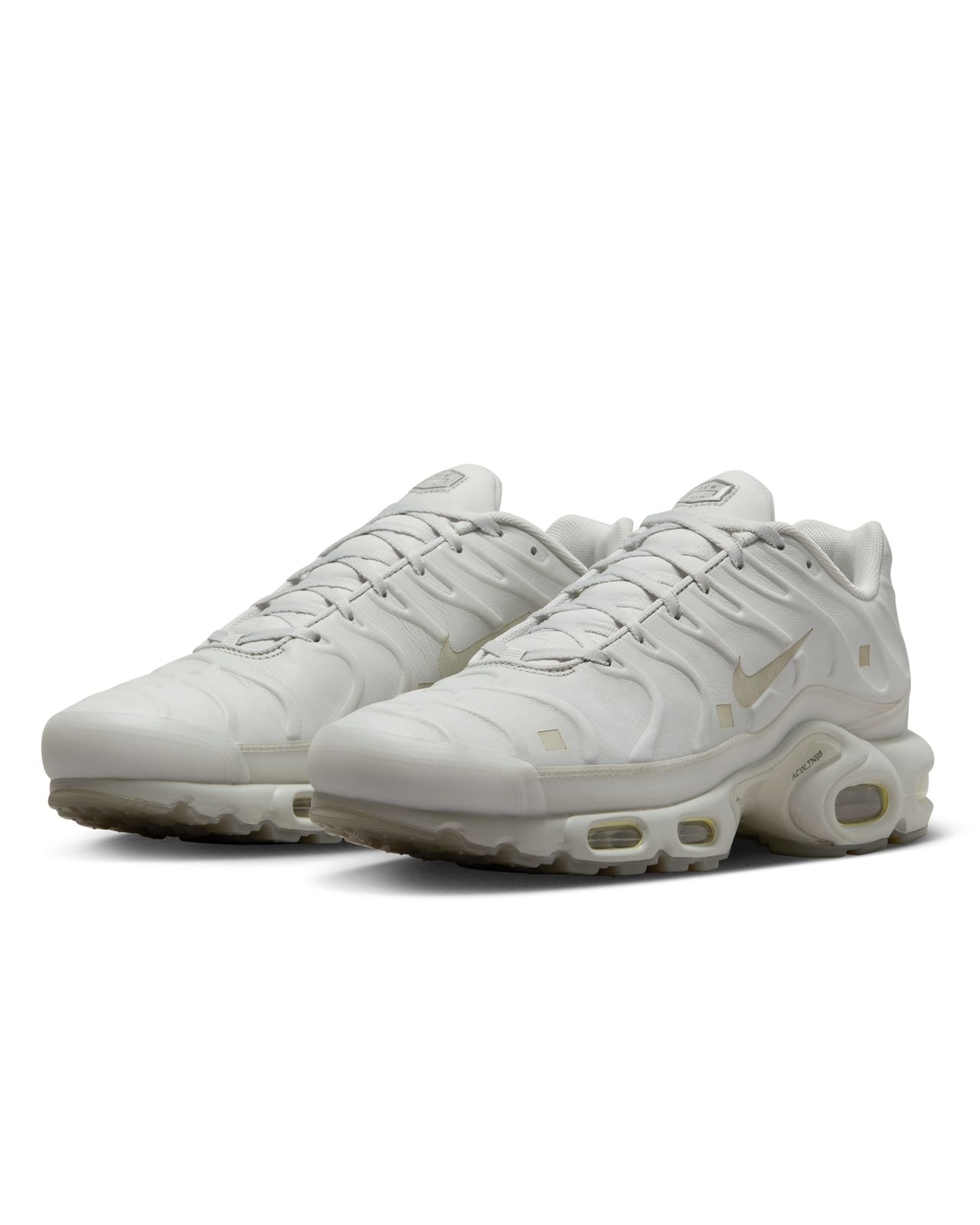
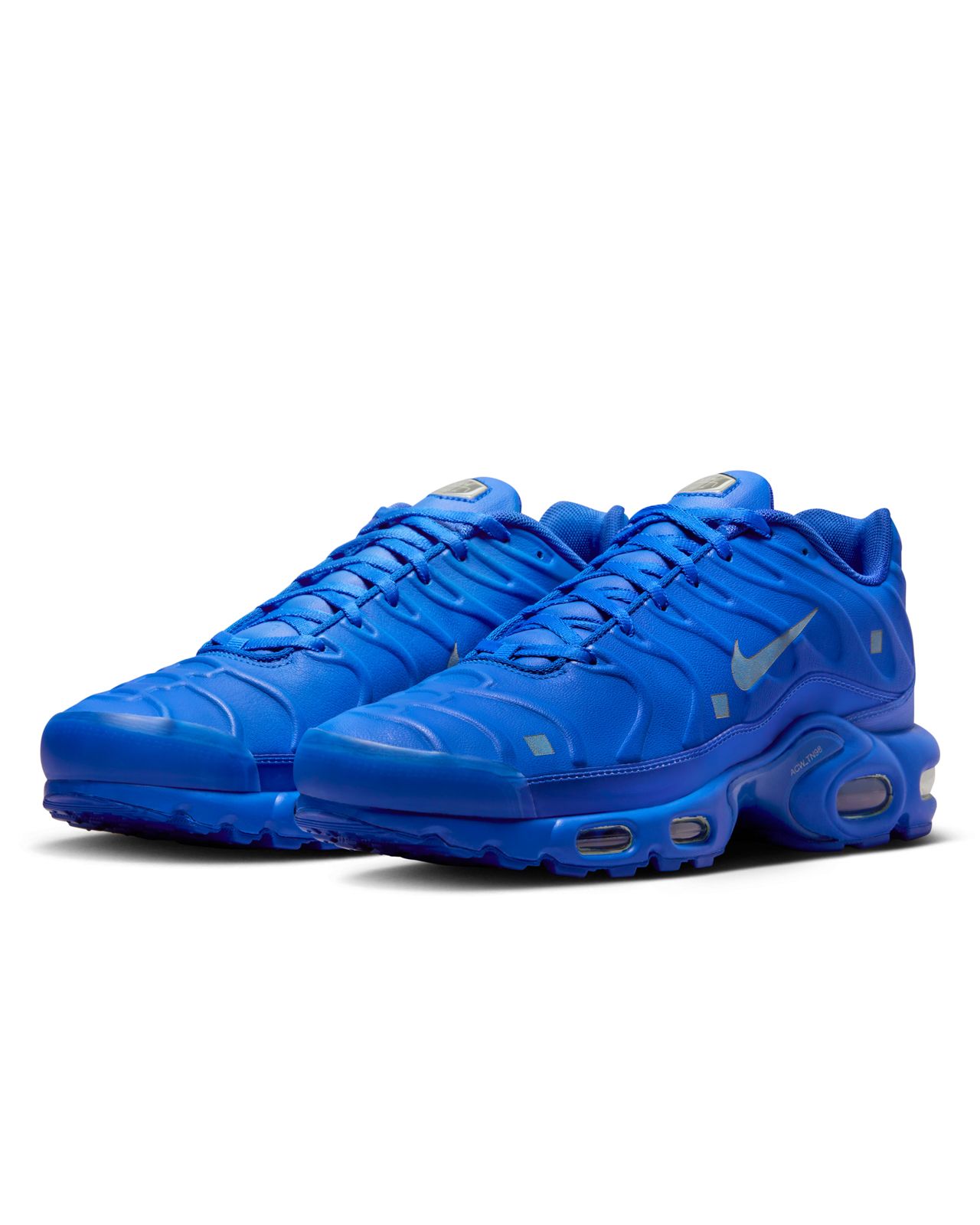
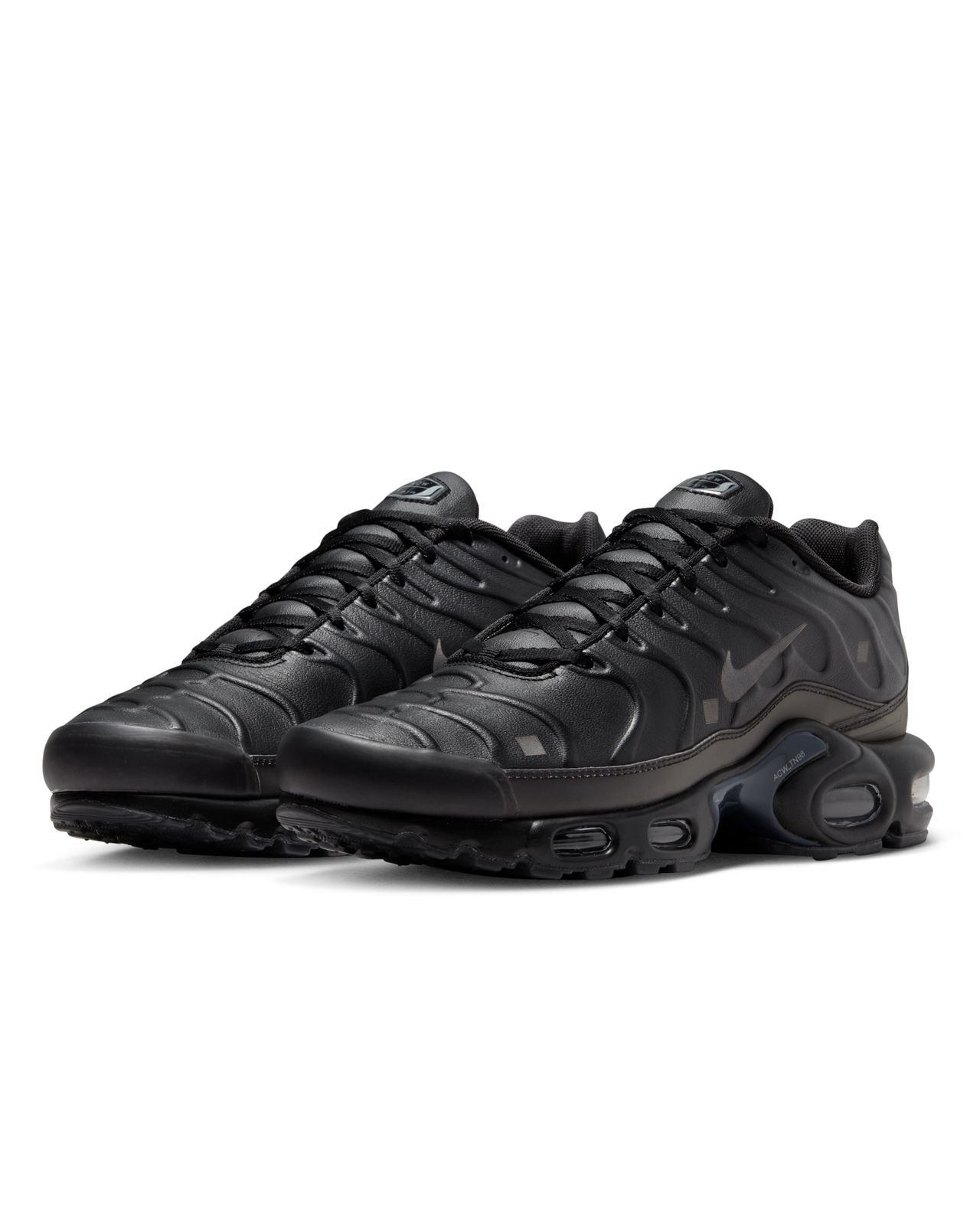
GM: I'd also say that there are similarities between the work I show in exhibitions and the work I do for brands. When working with brands, in the commercial space, I feel like they understand how my work looks, and how it then translates. It's a collaborative process. For me, it's about finding a good middle ground between being able to have work that sits in my world, but also being able to produce something that speaks on behalf of the brand.
My specific approach for the ACW_NIKE TN98 was focused on a lot of research. I always want to make sure we're pushing things forward or creating something that stands the test of time. In the first phase I was looking through past Nike campaigns. For me, a good campaign pays homage to the legacy of the brand whilst adding a new perspective. With a brand like Nike, who I have worked with from very early in my career, I was very comfortable and able to produce my ideas with them. It was great to have a good team that understood that and allowed me the space to do my thing.
SR: My thoughts on Gabriel’s campaign come back down to the crux of the partnership. The connective tissue between both artists is determined by their socio-geographic placements, the relationship to class, and a textured experience of what it means to engage with architecture and hidden cultures within the Black British diaspora.
The imagery of the campaign talks about, specifically for the Renaissance piece, the impetus and the importance of the Black British artistic canon that we're in the midst of seeing develop and establish on a global scale. There’s almost an oracle like appeal to that—when you consider the amount of bodies needed to make a movement. Or considering the relationship between European art and the Black body. All these aspects are filtered through the Renaissance imagery. The notion of athleticism is clear because it's a sportswear collaboration. There's a real cadence there.
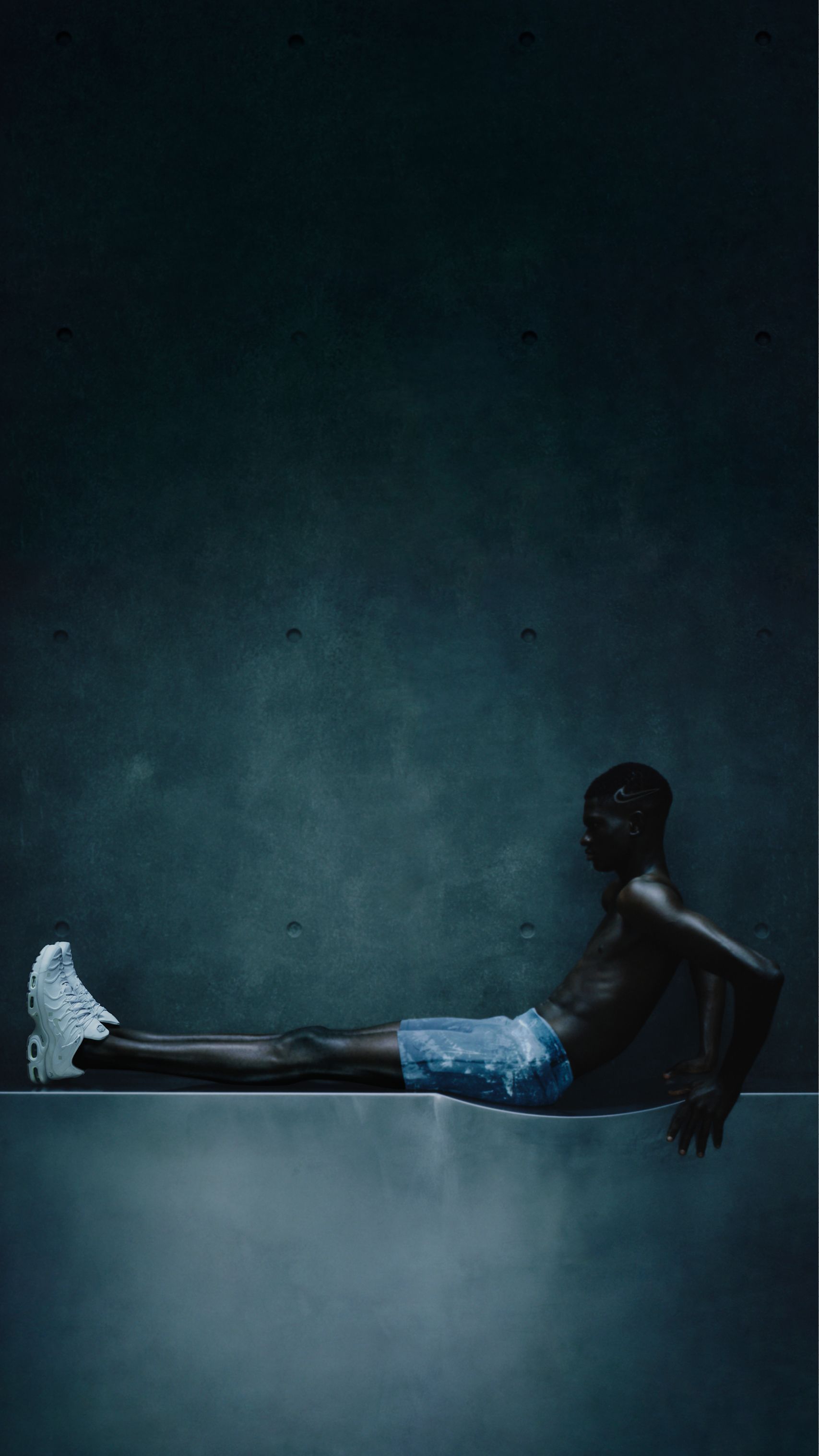
SA: Samuel, you have collaborated on many shoes with Nike. What is different about the ACW_NIKE TN98?
SR: The design process has always been about finding a way to reduce the TN98 down to a place of respecting the model itself and finding ways to bring the decodable world into the TN98. That's done through material developments such as laser etching, a lack of screen printing, and leather that will change color over time. It’s also done through the chipped and mottled midsole treatment, the iconography of the logos, the die, cut box design, and using color. All of that comes together to make the shoe different. It's about treating the shoe as part of an anthology of projects but finding ways to unveil details and properties of the shoe in a way that respects the language of A-COLD-WALL* and Nike. The constants are clear. They have always been about deconstruction, architecture, and brutalism. And there's always been an industrial spirit that filters for all of the footwear partnerships that we've produced with Nike.
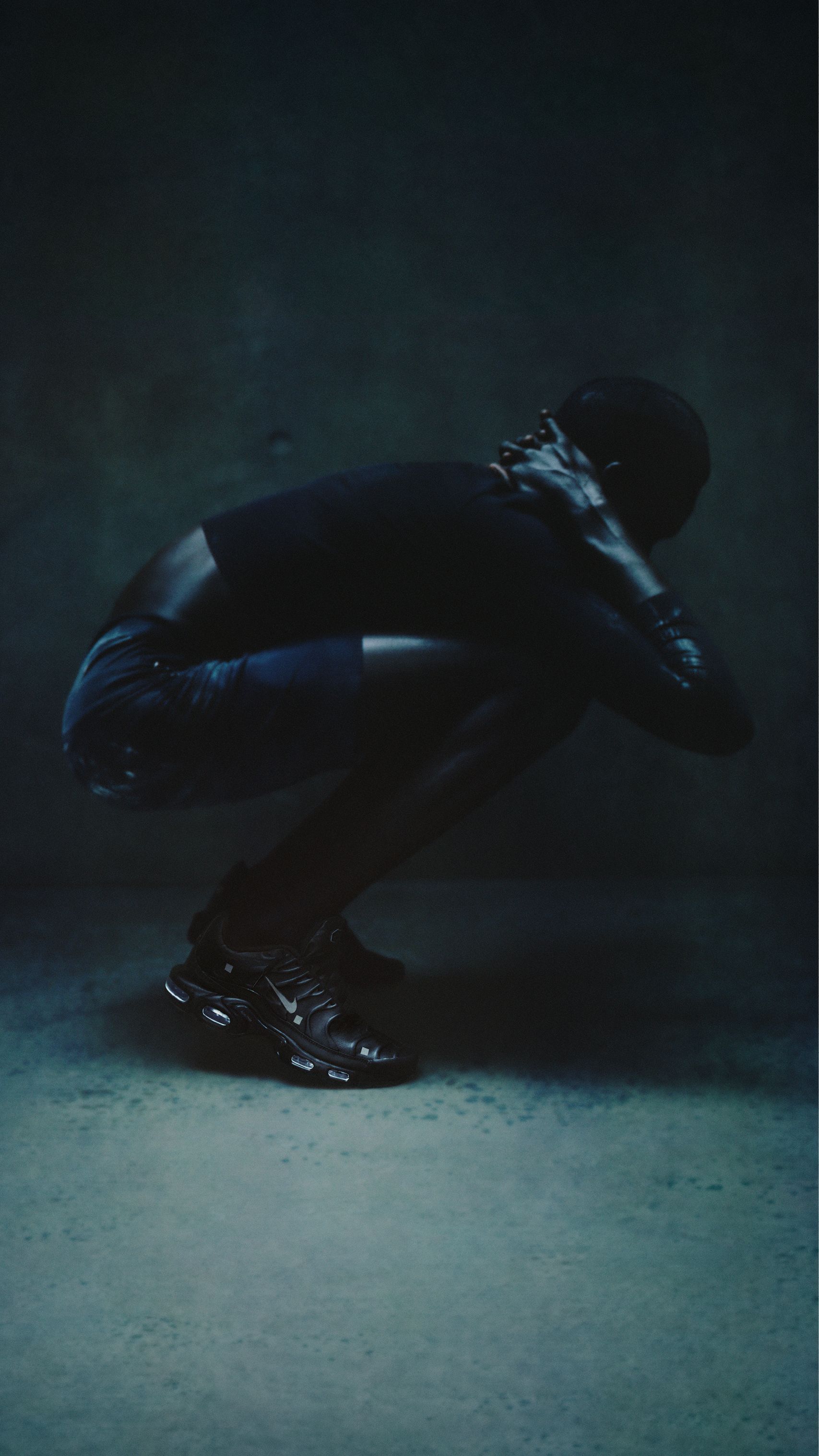
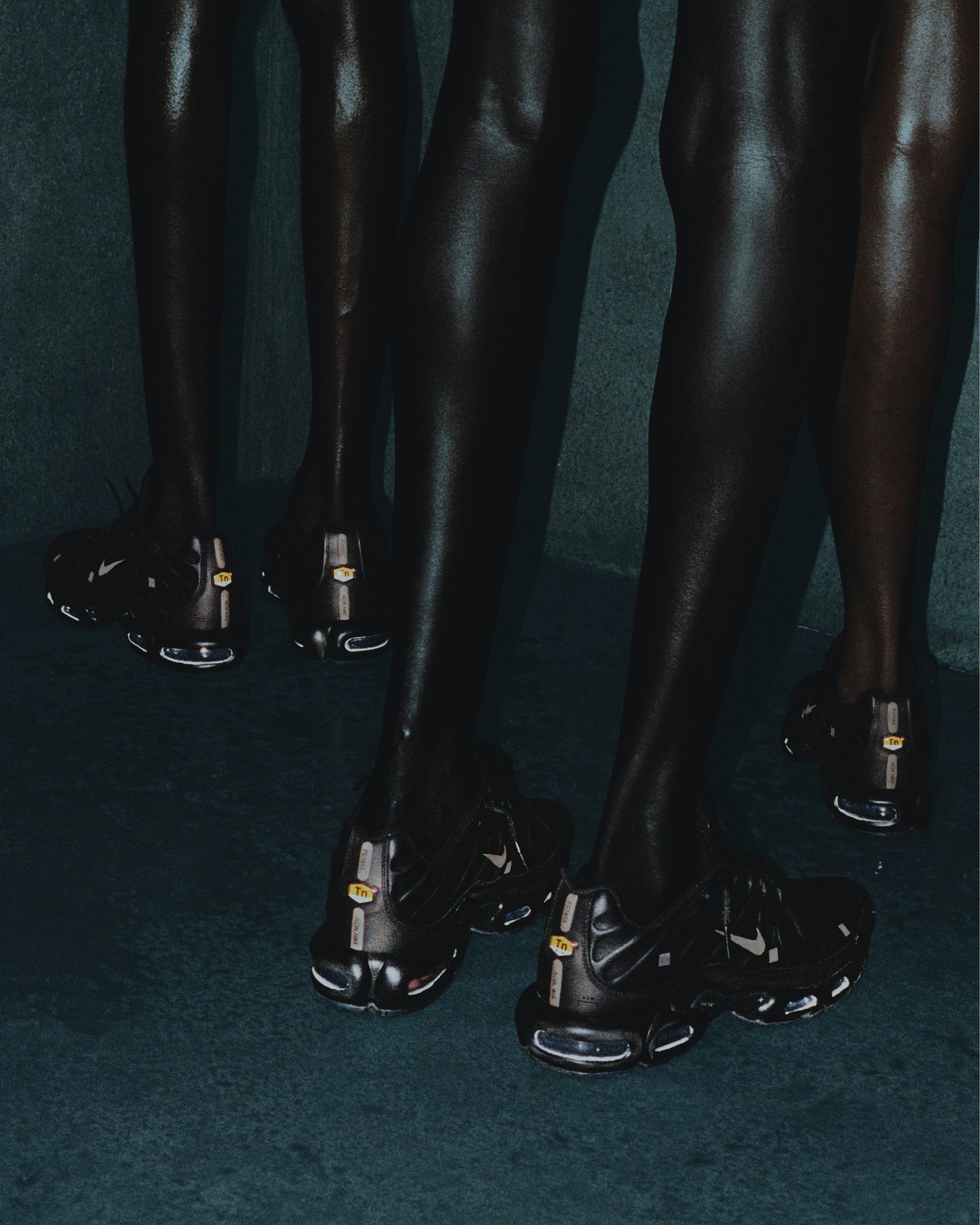
ON REPRESENTING COMMUNITY THROUGH CAPITAL
SA: Gabriel mentioned your London exhibition, Samuel. Could you talk about it?
SR: It was at the White Cube Bermondsey, and it was my first solo show in the UK with a major gallery. It was the highest recorded footfall the White Cube had ever had for an opening night relevant to fairly recent visitation captures, which is indicative of a shift in the artistic audience.
GM: I always wanted to marry art and commercial work. The ambition is for the commercial work to seamlessly sit in that space and for the independent art to have its own voice. It’s about timeless imagery all the time.
SR: Completely. And I think there’s this relationship to creativity and the ability to not only work on great projects but to also set up entities and companies which can generate money and capital. In the past 10–15 years, the artists, designers, and voices we tend to respect and think of as pioneers are all artists who operate companies. Gabriel, for instance, has his photographic and film practice, but also has Regina. On my side, I have A-COLD-WALL* and I have SRA.
I think it’s the first time in human history, where you can set up a trading entity, have an opportunity to generate a life and capital, which can then fund your artistic practice. Today, you can start a limited company or LLC in two days. You can pay 70 pounds to register your company in the UK and it’s pretty much free to file a trademark and then start trading.
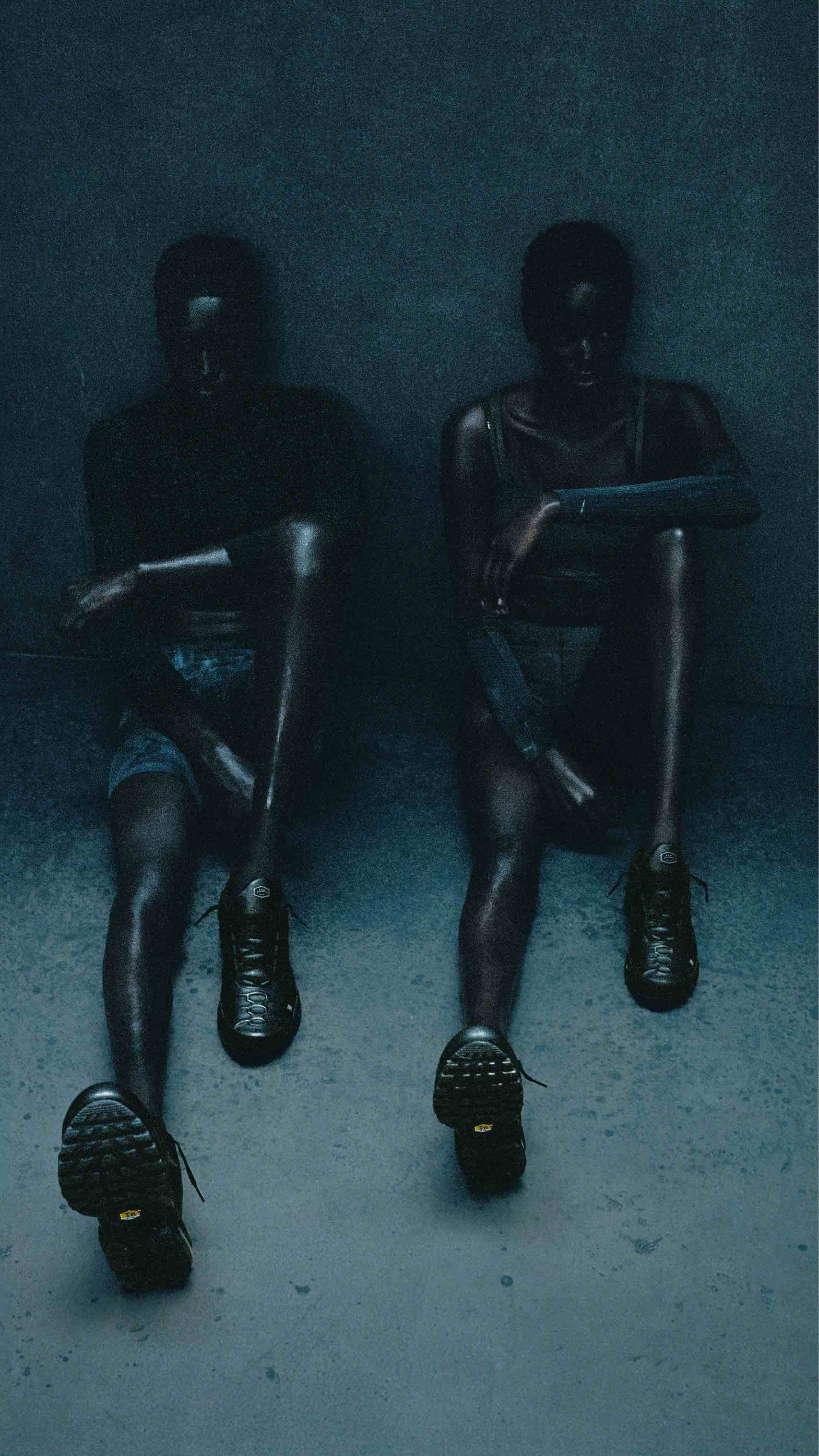
GM: I feel as a young Black man, it’s important to create businesses and establishments that are bigger than us and that can scale up. For sure, it’s about managing your career. We can make nice images, nice clothes, nice furniture, nice things from now till tomorrow, but we need to ensure that we’re building futures for our families and our communities in general.
Even after I walked Louis Vuitton, I remember being in the studio and saying, it’s so funny how when I go to the Bond Street store, security look at me funny. It shows that despite walking being one of the proudest moments in my career, the job is nowhere near being done. As Black men, no matter how much success we get, there’s so much to do, and it doesn’t happen overnight.
SR: I have a grant program that I started because I was moaning about there not being enough British grants for the Black community. Every year we give grants to ten individuals. But alongside the capital, which is self-funded, we also built an advisory board consisting of the V&A Museum, British Fashion Council, Royal College of Art, the Design Museum London, Westminster University, and a few others.
The prospect is to build a coalition where we become slightly more responsible for the work environment, the hiring policies, the autonomy, and the freedom given to other POC. But we still broker some type of relationship with the existing entity to ensure that we can funnel talent who deserve to have global placements.
SA: When you talk about creating these alternate models, we’re not talking about an alternative to capitalism, are we?
SR: I’m a capitalist. And I want Black run and owned companies. I want capital to flow in, and I want my people to do well. This is not like, “Hey, let’s start a company and be anarchists.” I think there’s an opportunity in a free trade market to set up LLCs [limited liability company] and companies and focus on empowerment and autonomy.
One of my friends, [NBA star] Jaylen Brown, just communicated a press release on this. He signed an incredible deal, and he’s saying the same stuff we’re saying. So collectively there is this perspective of, “Okay, there’s a system here.” Let’s leverage the system in place and ensure that other people get a shot or at least the opportunity to just have sustenance. It’s not about everyone being an NBA player or everyone being shown in the V&A. Some people will, but other people just deserve to be treated fairly in the workplace.
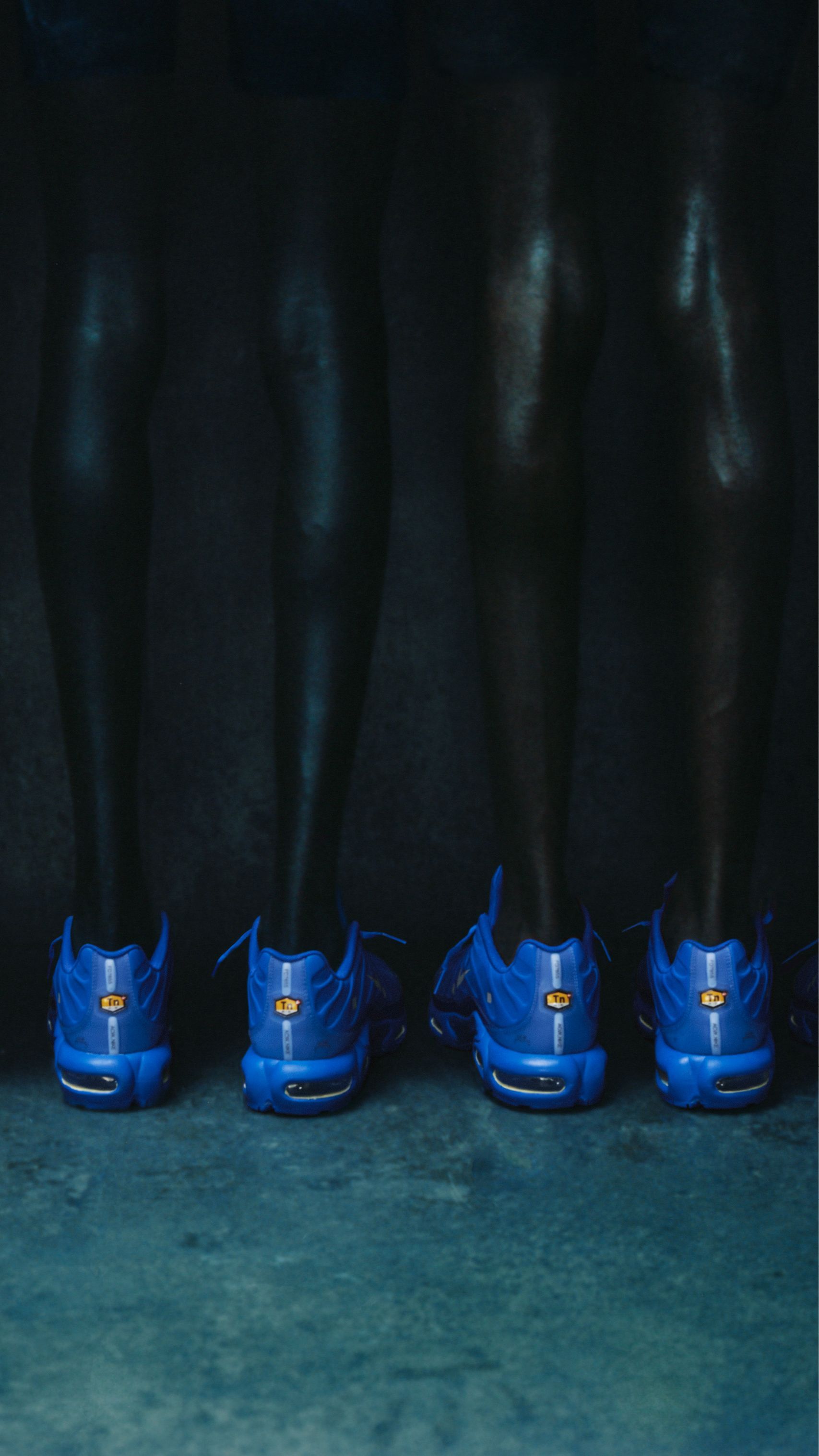
ON MOVEMENT WITH NIKES
SA: So, you’re not trying to create an alternate system but to better the one we’re in?
SR: I think we’re clearly like capitalists. We’re not nationalists, we’re not anarchists, we’re not Marxists. We might have sympathy to socialist views when it comes to how people should be treated, ethics, and welfare, but fundamentally we’re both interested in the free market and being able to scale these concepts to support new demographics. Demographics which haven’t been the focal point of the arts.
Coalitions with companies such as Nike play an important role. This is my twelfth shoe with them. And going back to question one, Gabriel and I have been working with Nike for such a long time now. Having corporate allies is extremely important across that tenure. We want the right coalitions to exist, the ones that are healthy and can be sustained and fortified.
GM: What we created for this collaboration is an Air Max. With a lot of my work, many of my influences are ancestral imagery or religious iconography. I took the word Air Max to heart here. I love the idea of almost recreating a Renaissance painting as one of the leading campaign images. An image that displays the product, but also can be seen as artwork. I feel like we could make an exhibition out of this campaign, and it wouldn’t look out of place, it wouldn’t even look insanely commercial.
SR: In my eyes, Gabriel is an artist in his own right. But there’s a particular way of seeing, of capturing a perspective, topic, a demographic or feeling, fundamentally. A feeling that he’s able to communicate through photography. I think that the strength of his portfolio is that the work solicits emotion to be pulled from the viewer.
That’s what good art does. It pulls and exudes what can’t be put into words. It kind of expands the threshold of what it is to be human and feel and respond to emotion and to image and picture.
The ACW_NIKE Tn98 is available to purchase now via a-cold-wall.com and 9/21 on SNKRS.
Credits
- Text: Shane Anderson
- Photography: Gabriel Moses
Related Content
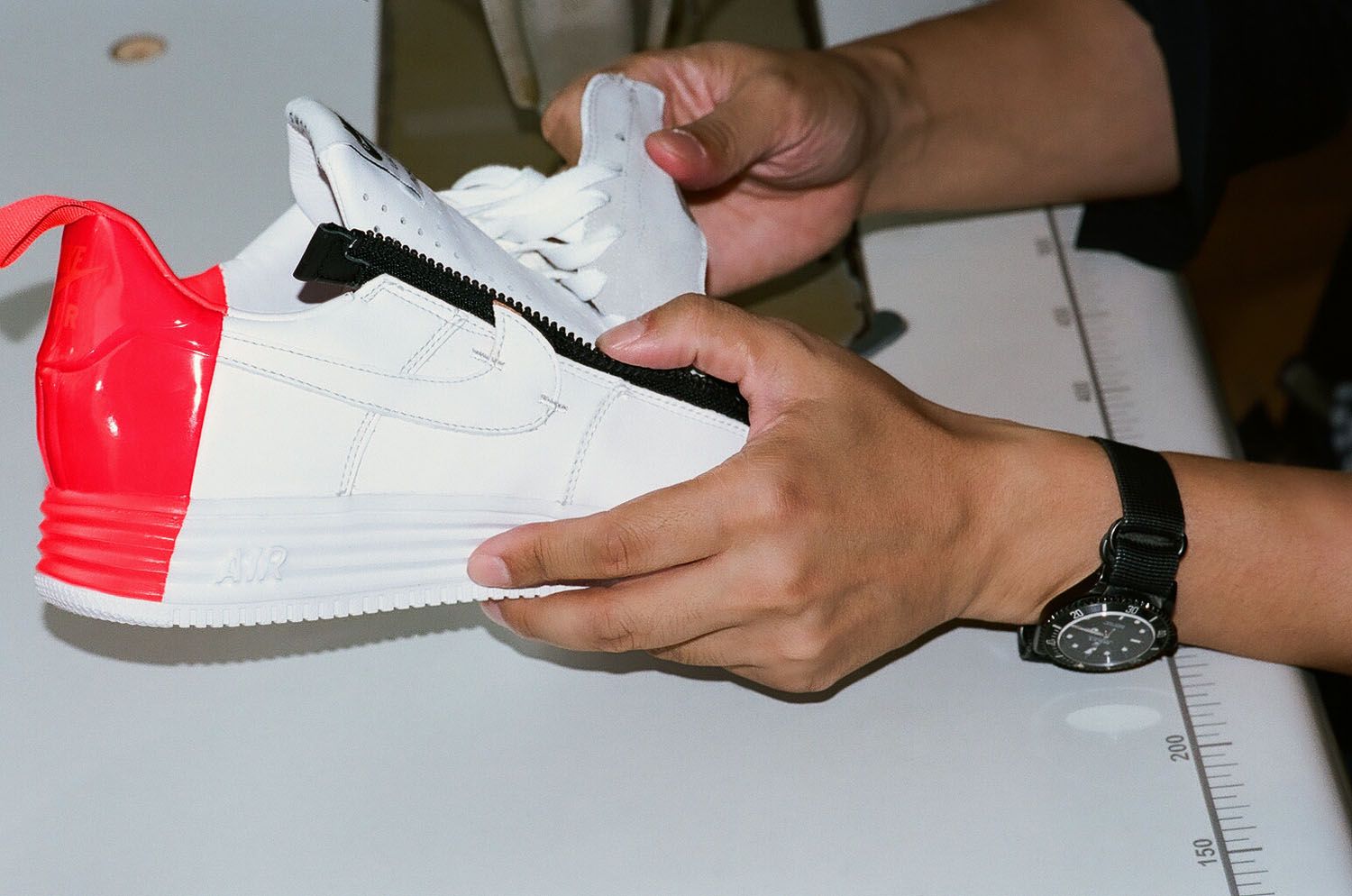
ACRONYM’s Functional Intervention on the NIKE Air Force One
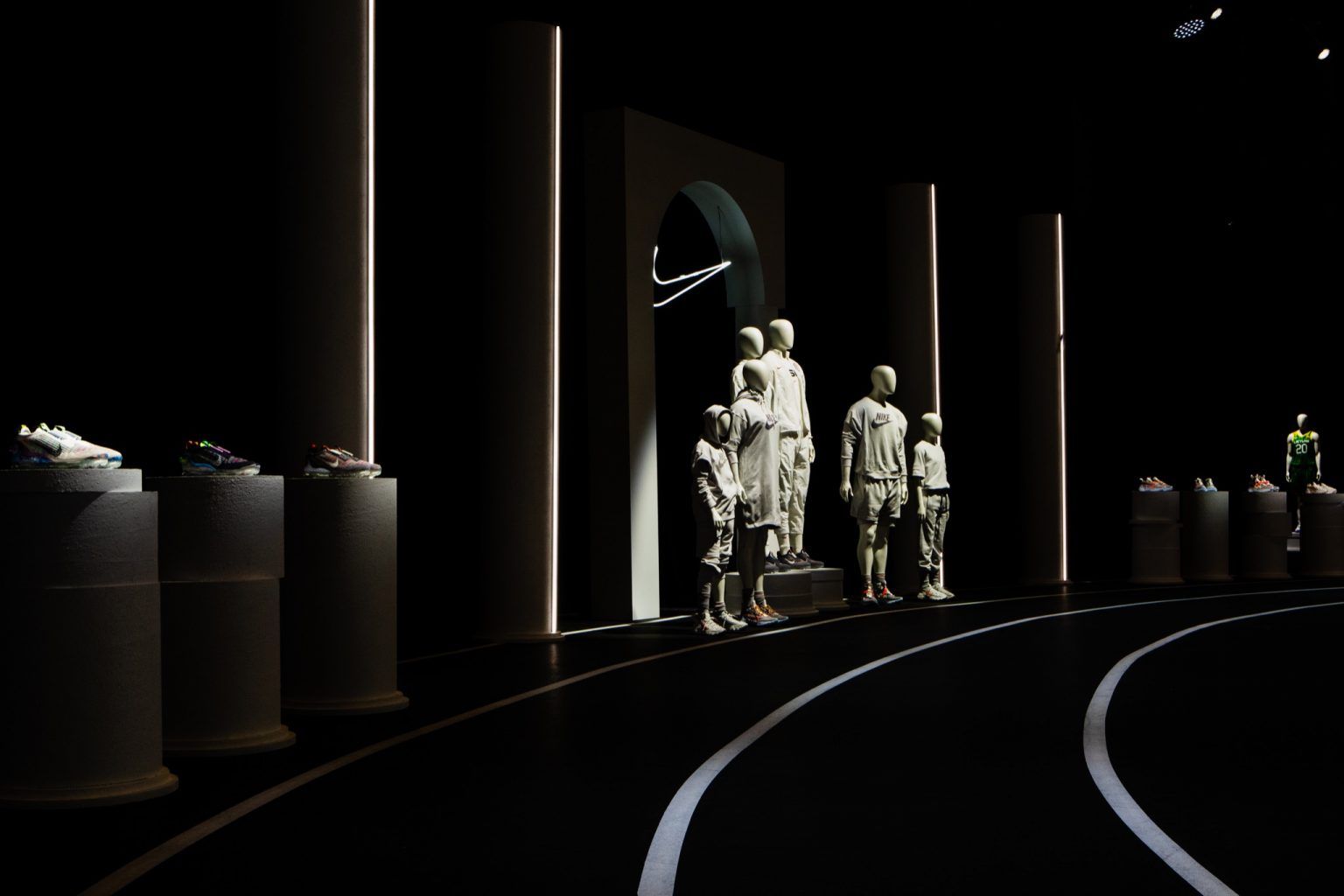
NIKE in 2020: Strengths, Weaknesses, Opportunities, Threats
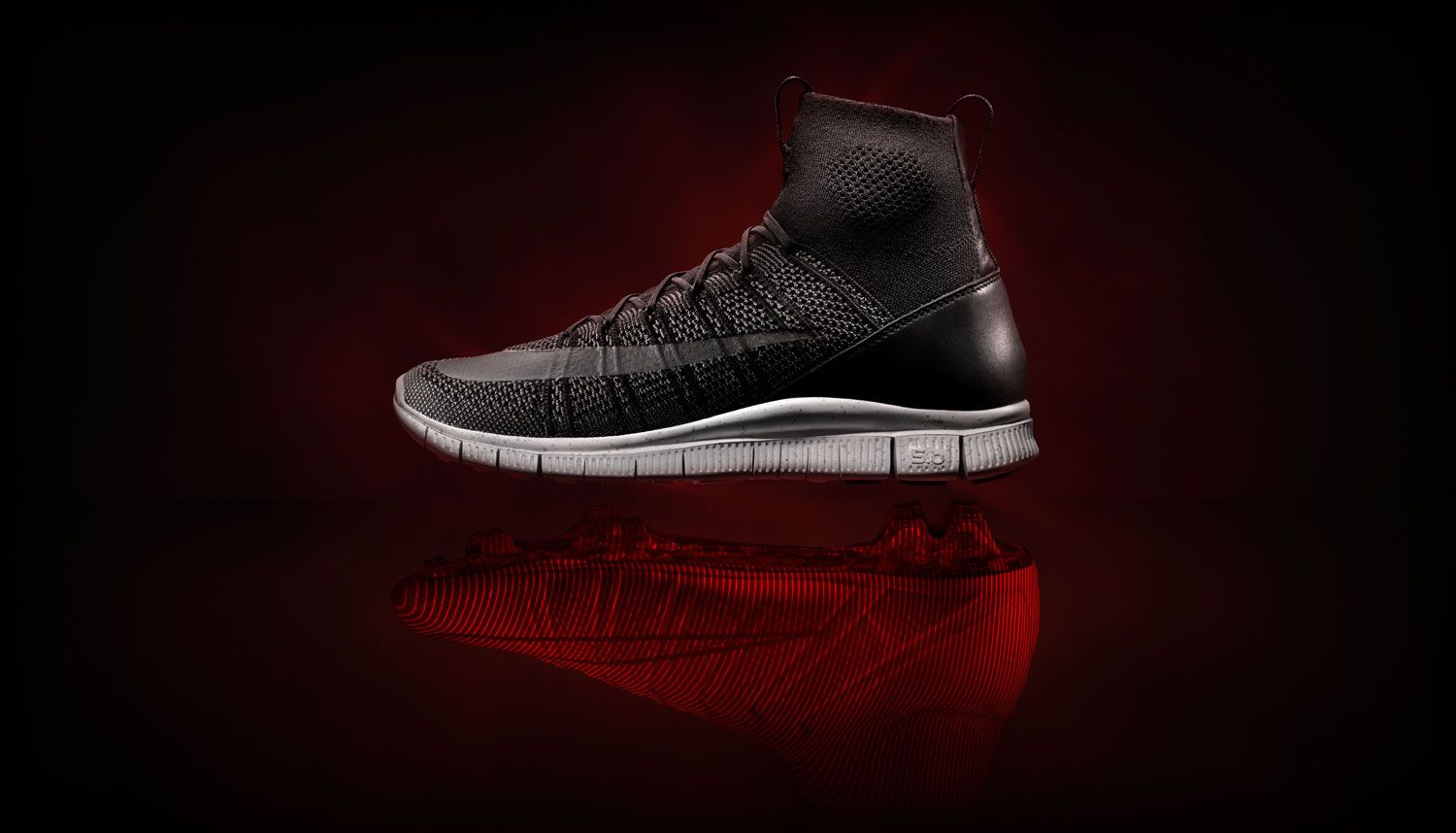
#GlobalExclusive: 032c Unveils Nike’s Latest HTM Shoe and Start of NIKELAB
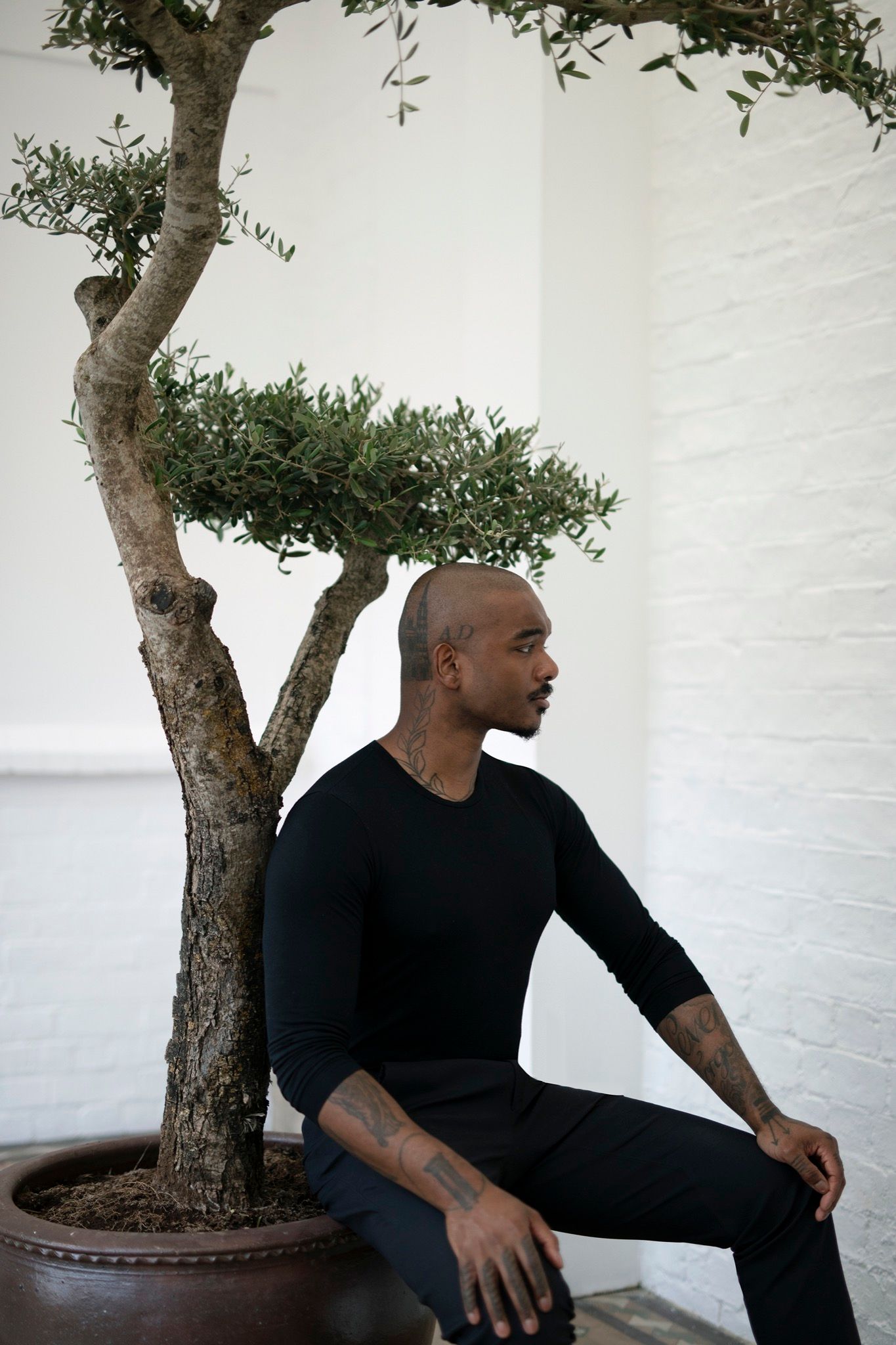
Indefinite Optimism: A-COLD-WALL*’s SAMUEL ROSS
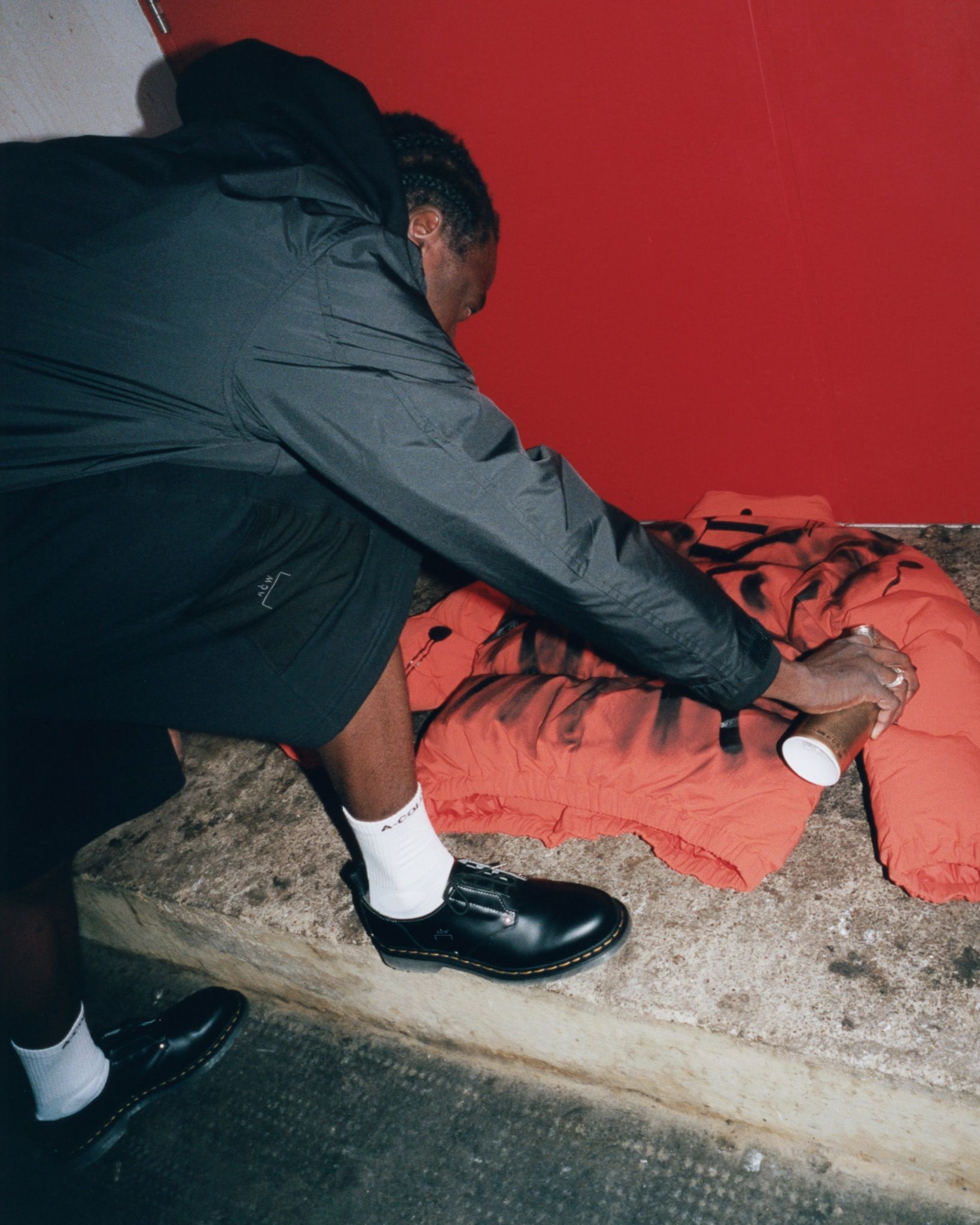
The Cold and the Beautiful: SAMUEL ROSS Reinforces UK Brutalism with the ACW* x DR. MARTENS 1461 Work Shoe
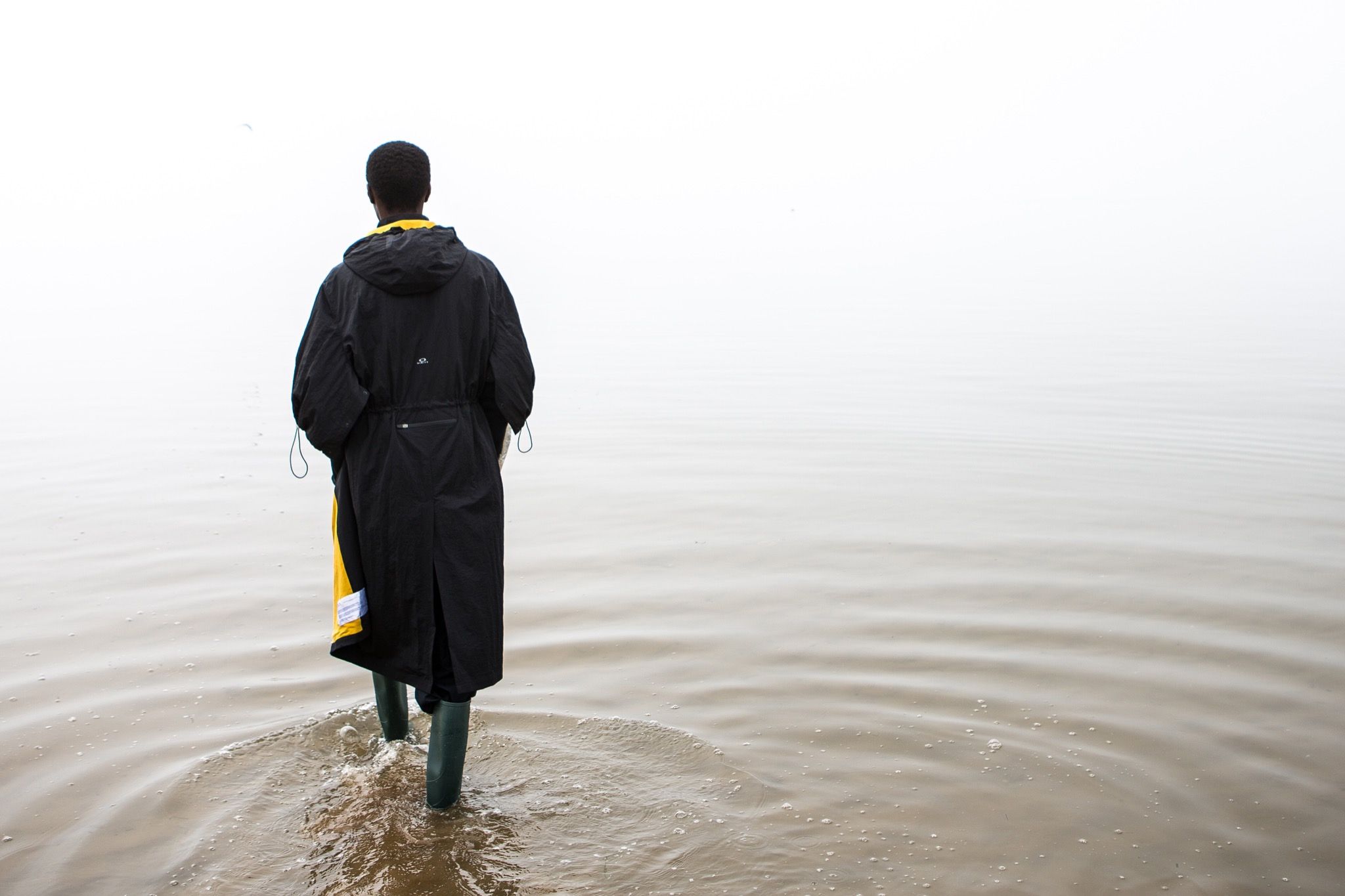
COME RAIN OR SHINE: Oakley by Samuel Ross Season 2 Against the Cold
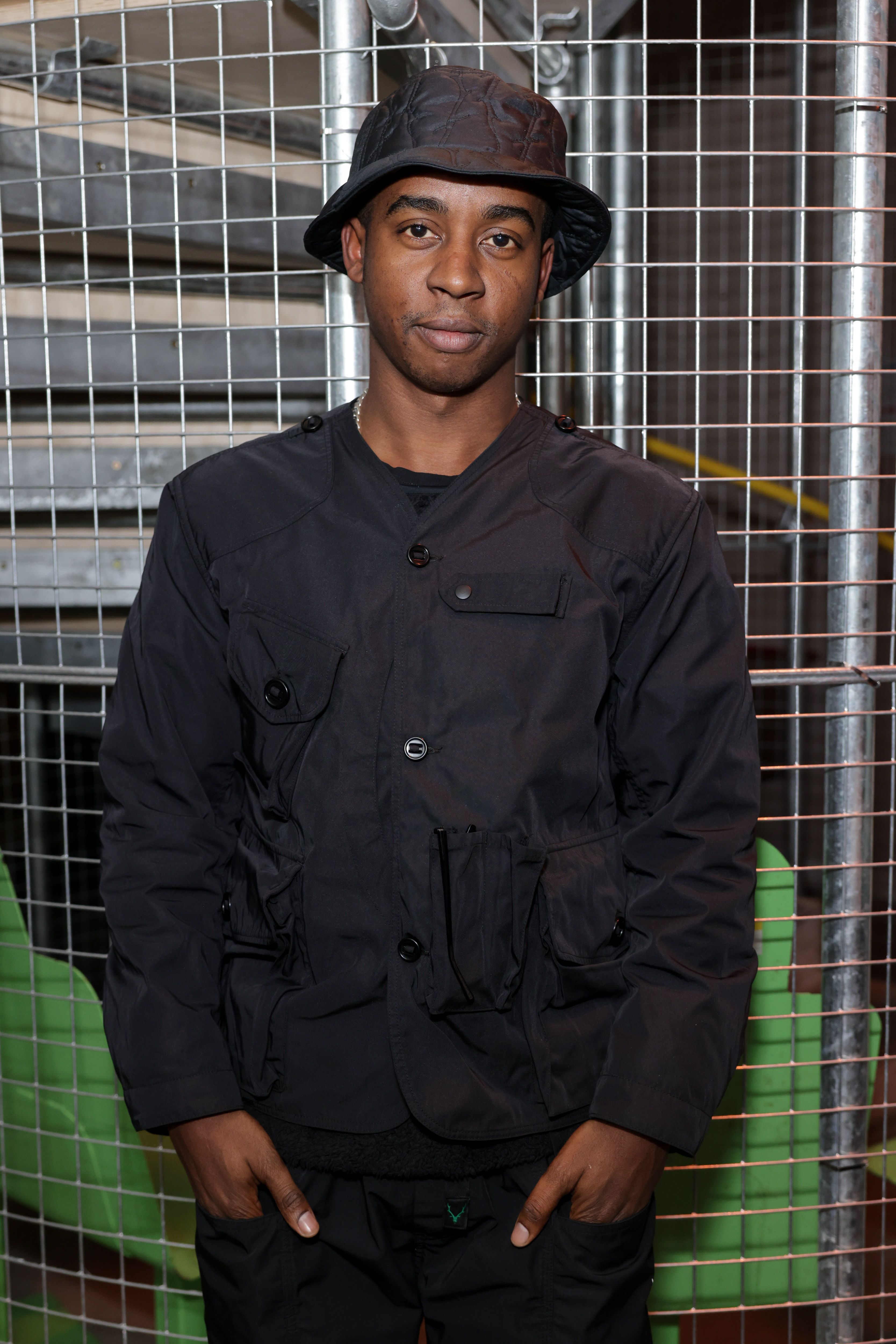
A Guide for Immortal Design: Dr. Martens
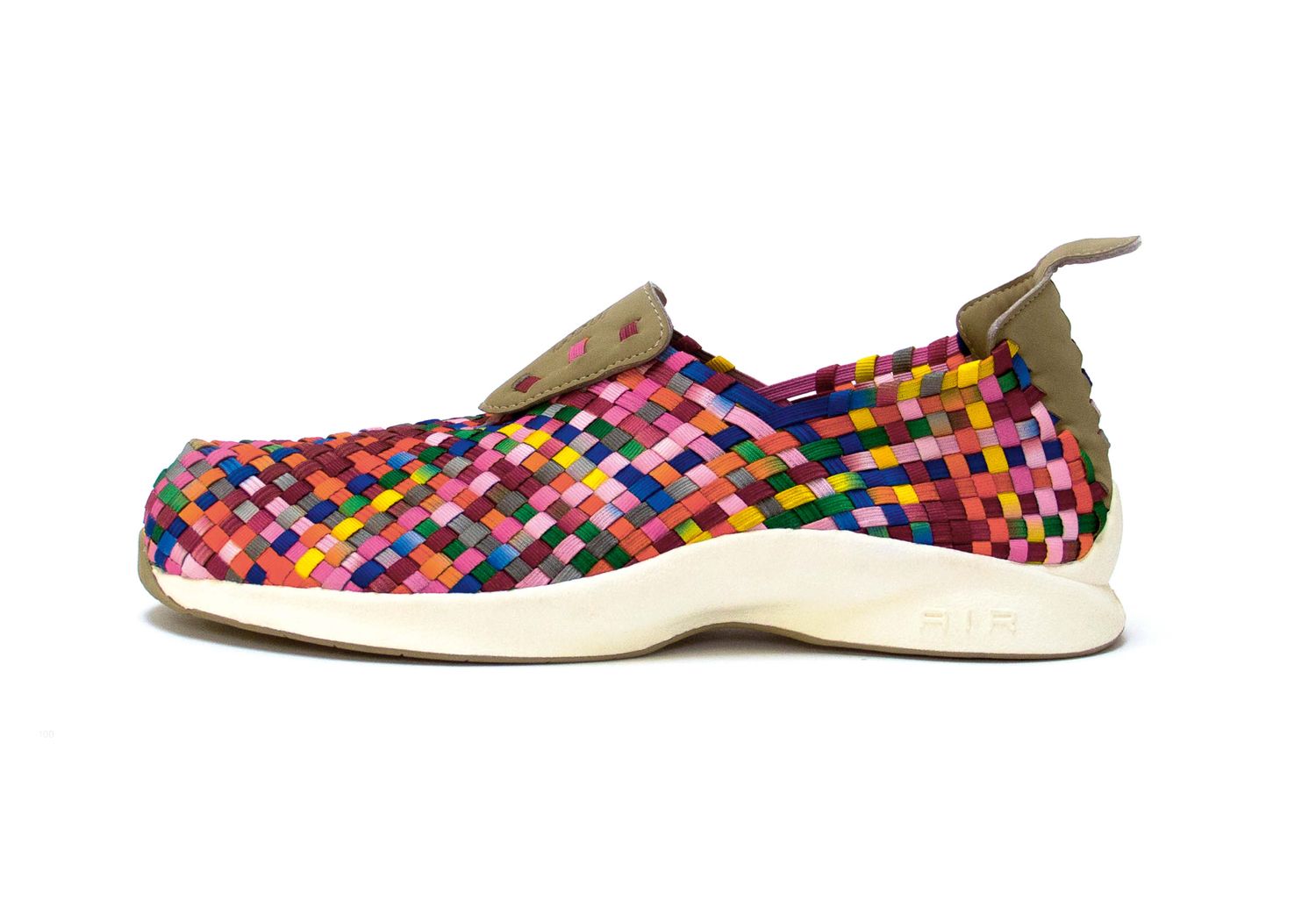
NIKE: The Spirit Machine